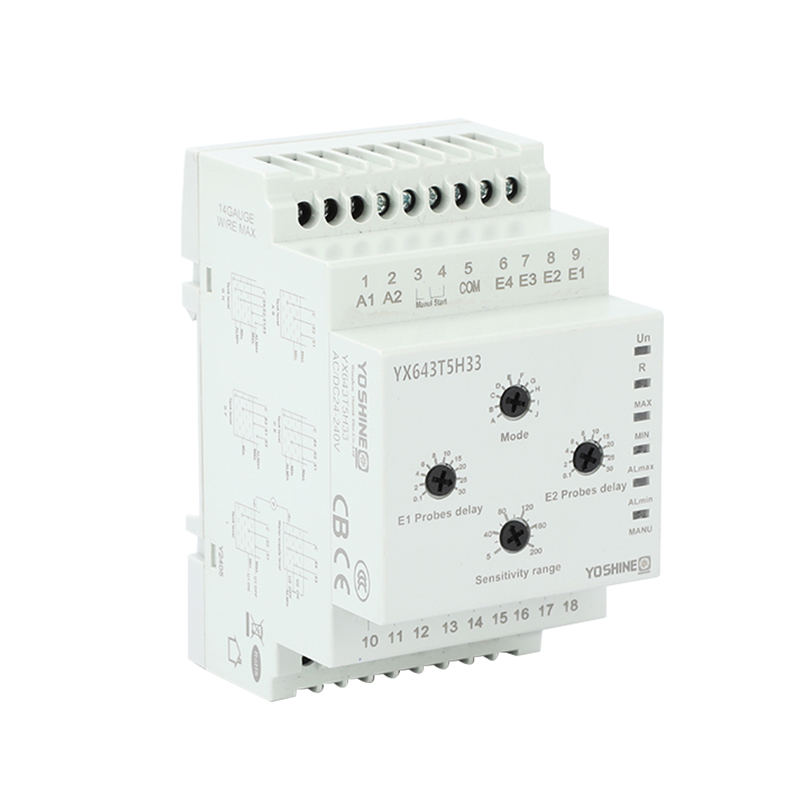In the realm of fluid management, liquid level relays play a crucial role in maintaining accurate and reliable control over fluid levels in various industrial and commercial applications. A liquid level relay manufacturer is constantly seeking ways to improve the design, efficiency, and versatility of these devices to meet evolving market demands. Innovation in fluid control technology has become a key focus for these manufacturers as they work to develop products that offer enhanced performance and adaptability.
One major area of innovation by liquid level relay manufacturers involves the integration of advanced sensing technologies. Traditional liquid level relays often relied on simple float switches or mechanical sensors to detect fluid levels. However, modern devices increasingly incorporate electronic sensors such as ultrasonic, capacitive, or optical sensors. These advancements allow for more precise measurements, improved sensitivity, and reduced mechanical wear, resulting in longer-lasting and more reliable relays.
Additionally, manufacturers are developing liquid level relays that can handle a broader range of fluids and operating conditions. Fluids with varying chemical compositions, temperatures, and viscosities require specialized sensors and housing materials. By innovating in materials science and sensor technology, liquid level relay manufacturers create devices capable of functioning effectively in harsh environments, such as corrosive chemical tanks or high-temperature industrial processes.
Customization options also reflect ongoing innovation efforts. Many liquid level relay manufacturers now offer tailored solutions to suit specific client requirements. These customizations may include adjustable setpoints, different voltage and current ratings, or compatibility with specific control systems. The ability to adapt liquid level relays to unique operational needs enhances their utility across industries like water treatment, food and beverage, pharmaceuticals, and chemical processing.

Another area of development is in the digital connectivity of liquid level relays. With the rise of smart technologies and the Industrial Internet of Things (IIoT), manufacturers are incorporating communication protocols such as Modbus, Ethernet/IP, or wireless interfaces. This enables liquid level relays to provide real-time data to centralized control systems, allowing for remote monitoring and automated fluid management. Such features help reduce manual interventions, improve system efficiency, and facilitate predictive maintenance.
Energy efficiency is also a concern addressed by many liquid level relay manufacturers. Innovations include designing relays with lower power consumption and the ability to operate on renewable energy sources in remote or off-grid locations. These improvements not only reduce operational costs but also contribute to environmental sustainability efforts.
In terms of safety, manufacturers continue to innovate by developing relays that meet stricter industry standards and certifications. Features such as explosion-proof housings or intrinsically safe circuits enable liquid level relays to be used safely in hazardous environments, expanding their applicability.
Training and customer support have become integral to the innovation process as well. Many liquid level relay manufacturers invest in comprehensive user manuals, technical support, and software tools that assist clients in selecting, installing, and maintaining their products effectively. These services ensure that innovations are not only present in the product but also fully utilized by end-users.
The innovations from liquid level relay manufacturers reflect a commitment to improving fluid control technology in terms of accuracy, durability, customization, connectivity, energy use, and safety. These advancements help industries maintain better control over their fluid systems, reduce downtime, and adapt to changing regulatory and operational environments. As technology continues to evolve, liquid level relays are expected to become even more versatile and intelligent components within fluid management systems.